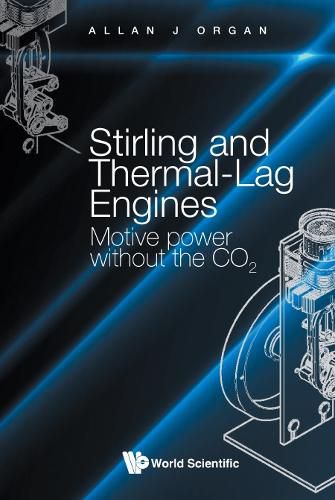Readings Newsletter
Become a Readings Member to make your shopping experience even easier.
Sign in or sign up for free!
You’re not far away from qualifying for FREE standard shipping within Australia
You’ve qualified for FREE standard shipping within Australia
The cart is loading…






This title is printed to order. This book may have been self-published. If so, we cannot guarantee the quality of the content. In the main most books will have gone through the editing process however some may not. We therefore suggest that you be aware of this before ordering this book. If in doubt check either the author or publisher’s details as we are unable to accept any returns unless they are faulty. Please contact us if you have any questions.
Existing literature focuses on the alleged merits of the Stirling engine. These are indeed latent but, decades on, remain to be fully realised. This is despite the fact that Stirling and other closed-cycle prime-movers offer a contribution to an ultra-low carbon economy. By contrast with solar panels, initial manufacture of Stirling engines makes no demands on scarce or exotic raw materials. Further, calculating embodied carbon per kWh favours the Stirling engine by a wide margin.However, the reader expecting the find the Stirling engine promoted as a panacea for energy problems may be surprised to find the reverse. Stirling and Thermal-lag Engines reflects upon the fact that there is more to be gained by approaching its subject as a problem than as a solution. The Achilles heel of the Stirling engine is a low numerical value of specific work, defined as work per cycle per swept volume per unit of charge pressure and conventionally denoted Beale number NB. Measured values remain unimproved since 1818, quantified here for the first time at 2% of the NB of the modern internal combustion engine! The low figure is traced to incomplete utilization of the working gas. Only a small percentage of the charge gas - if any - is processed through a complete cycle, i.e., between temperature extremes.The book offers ready-made tools including a simplified algorithm for particle trajectory map construction; an author-patented mechanism delivering optimized working-gas distribution; flow and heat transfer data re-acquired in context and an illustrated re-derivation of the academically respected Method of characteristics which now copes with shock formation and flow-area discontinuities. All formulations are presented in sufficient detail to allow the reader to ‘pick up and run’ with them using the data offered in the book.The various strands are drawn together in a comprehensively engineered design of an internally focusing solar Stirling engine, presented in a form allowing a reader with access to basic machining facilities to construct one.The sun does not always shine. But neither will the oil always flow. This new title offers an entree to technology appropriate to the twenty-first century.
$9.00 standard shipping within Australia
FREE standard shipping within Australia for orders over $100.00
Express & International shipping calculated at checkout
This title is printed to order. This book may have been self-published. If so, we cannot guarantee the quality of the content. In the main most books will have gone through the editing process however some may not. We therefore suggest that you be aware of this before ordering this book. If in doubt check either the author or publisher’s details as we are unable to accept any returns unless they are faulty. Please contact us if you have any questions.
Existing literature focuses on the alleged merits of the Stirling engine. These are indeed latent but, decades on, remain to be fully realised. This is despite the fact that Stirling and other closed-cycle prime-movers offer a contribution to an ultra-low carbon economy. By contrast with solar panels, initial manufacture of Stirling engines makes no demands on scarce or exotic raw materials. Further, calculating embodied carbon per kWh favours the Stirling engine by a wide margin.However, the reader expecting the find the Stirling engine promoted as a panacea for energy problems may be surprised to find the reverse. Stirling and Thermal-lag Engines reflects upon the fact that there is more to be gained by approaching its subject as a problem than as a solution. The Achilles heel of the Stirling engine is a low numerical value of specific work, defined as work per cycle per swept volume per unit of charge pressure and conventionally denoted Beale number NB. Measured values remain unimproved since 1818, quantified here for the first time at 2% of the NB of the modern internal combustion engine! The low figure is traced to incomplete utilization of the working gas. Only a small percentage of the charge gas - if any - is processed through a complete cycle, i.e., between temperature extremes.The book offers ready-made tools including a simplified algorithm for particle trajectory map construction; an author-patented mechanism delivering optimized working-gas distribution; flow and heat transfer data re-acquired in context and an illustrated re-derivation of the academically respected Method of characteristics which now copes with shock formation and flow-area discontinuities. All formulations are presented in sufficient detail to allow the reader to ‘pick up and run’ with them using the data offered in the book.The various strands are drawn together in a comprehensively engineered design of an internally focusing solar Stirling engine, presented in a form allowing a reader with access to basic machining facilities to construct one.The sun does not always shine. But neither will the oil always flow. This new title offers an entree to technology appropriate to the twenty-first century.